- S.D. Eibar ready for maiden La Liga outing
- SD Eibar stengthen ahead of debut La Liga season
- Can ‘Super Mario’ live up to expectations in Madrid?
- MAN IN THE GROUND – Brentford 0 – 4 Osasuna
- Historic Basque derby welcomes S.D. Eibar to La Liga
- Munich to Madrid, via Brazil – Tony Kroos
- Rakitic in Spanish Switch
- Can Spain find redemption in Rio?
- Viva Espana! A season of redemption for Spanish football
- From the old to the new: who can fill the void in years to come for La Roja?
The X-Men Origins: Football and Xerez CD
- Updated: 12 November, 2012
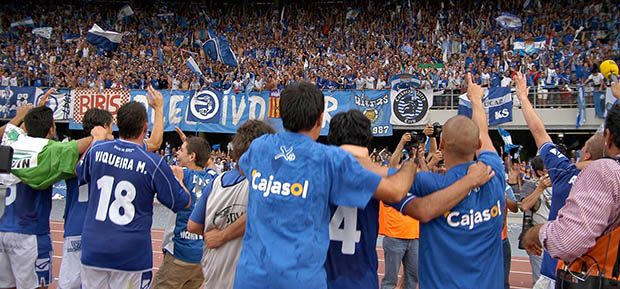
The city of Jerez de la Frontera encapsulates the very essence of Andalucia. It may not be on the tourist trails with the likes of Granada and Sevilla, but what it loses in terms of visitors it more than makes up for in character. Steeped in history, Jerez is home to the world renowned Royal Equestrian School, the capital of the Spanish brandy and sherry trade and the cultural centre of flamenco. It’s surprising therefore that this city of nearly a quarter of a million citizens has achieved so little on the football field.
Given its proximity to Sevilla and Cadiz, one would have expected Jerez to feature prominently in the early history of football in the region, but for one reason or another, it was and to some extent, has remained a football backwater.
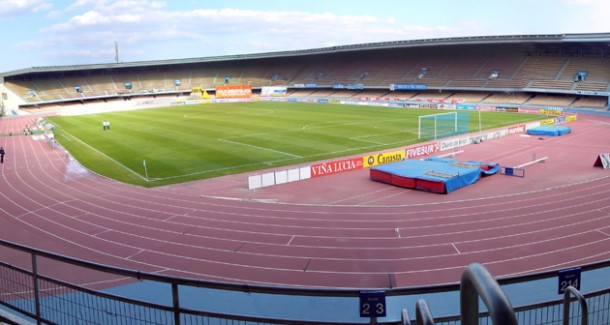
A succession of small clubs vied for top billing in the city, but it wasn’t until the advent of the professional age that the city had a team that was successful beyond the province of Cadiz. Formed in December 1932, Xerez Football club made short work of the regional leagues and the Tercera to reach La Segunda for the 1935-36 season. The club played a total of eight seasons in La Segunda before losing in the relegation play-offs of June 1946. The debts that the club accumulated whilst playing on a national level, proved too onerous and on 26 August 1946 Xerez folded.
A year later and with the debts of the former club cleared, Jerez Club Deportivo, the reserve side of Xerez FC, took its first steps in senior football. They agreed to play at the Estadio Domecq, a stadium built with funds from the famous wine merchants and got off to the perfect start by winning the Regional Championship. Within six years, the club had reached La Segunda and here they stayed for five seasons with a best place finish of sixth, before Jerez dropped back to the Tercera at the end of the 1957-58 season.
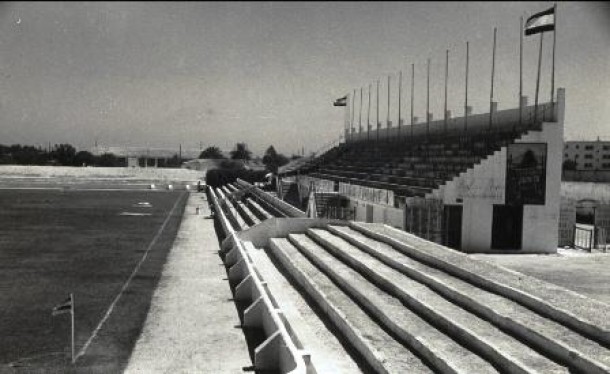
The Estadio Domecq
Not a great deal happened over the next three decades. Jerez CD became Xerez CD in August 1963 and the newly named club made three season long visits to La Segunda between 1968 & 1982. They returned to the second tier in 1986-87, but despite finishing bottom, avoided relegation thanks to the Federation’s decision to cancel relegation. Making the most of the reprieve, the club recovered and recorded a ninth place finish in what was to be its last season at the Estadio Domecq. The old stadium, with its four sides of open terraces would have looked out of date in the 1960’s. So it came as a relief when the club moved seven hundred metres to the south east and the new Municipal de Chapin in August 1988.
The new stadium was quite a step up from Domecq. Seating 17,500 over two quite separate hook shaped stands, the new ground also provided the faithful with cover for the first time. A roof over the west side covered 2,500 seats, whilst both stands had a lower tier where 5,500 could seek shelter. The official opening took place on 24 August 1988 when Xerez played Real Madrid and lost 0-1. Xerez lost its second division status in 1991 and spent much of the 1990’s in Segunda B.
The arrival of the new millennium would mark the start of the club’s most successful period, but before that could happen, Xerez had to hit the road as the Municipal de Chapin was about to undergo a make-over. The city’s equestrian heritage was recognised with the hosting of the 2002 World Equestrian Games. The World Games however, would require an enclosed arena and so the municipality funded what was effectively a rebuild. The Cruz y Ortiz Architect Studio, which had worked on the Olimpic Stadium in Sevilla a couple years previous, was commissioned and came up with a design that kept the original footprint of the stands.
A roof was added to both hooked stands and the arena was finally enclosed with the addition of a hotel in the north west corner and offices that house a sports performance centre in the south east. The stadium was given an outer skin to support the cantilevered roof, which in turn saw the extension of the upper tiers. The new capacity stood at 22,000, but to start with, the stadium would see no football or athletics, as a metre of sand was dumped on the playing surface so that the horses could have some fun.
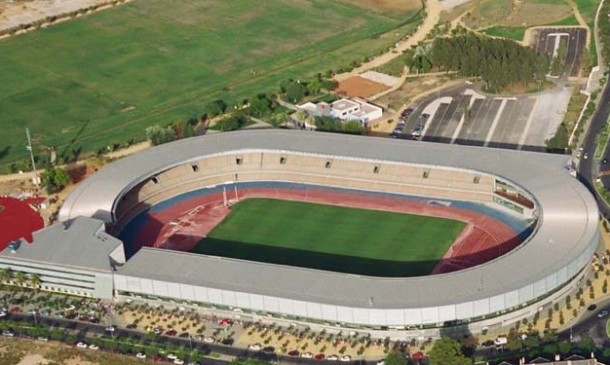
The Estadio Municipal de Chapin
In 2009-10, under the guidance of Esteban Vigo and with a team absent of any stars, Xerez won the second division title and with it a place in La Primera for the first time. Life was always going to be tough with the smallest budget in the top flight and at one point it looked as if Xerez would set some unwanted records. Thankfully they rallied and with what seemed to be the support of the wider Spanish footballing public, very nearly avoided relegation. Back in La Segunda and with the dream of La Primera over, Xerez returned to mid-table anonymity.
The Estadio Municipal de Chapin is a fine stadium that any town twice the size of Jerez de la Frontera would be proud of. The 2002 rebuild undoubtedly improved what was before a dour and somewhat characterless stadium. However, no matter how you dress it up, it is an athletics stadium, not a football ground. Like Anoeta and La Cartuja, it is a very attractive athletics venue, but all the pitfalls that befall its bigger brothers in San Sebastian and Sevilla are also found here at the Chapin.
There has been talk since 2006 of removing the track, lowering the pitch and adding an additional open tier, but nothing has come of that to date. So, the fans of Xerez will have to make do with their 20,742 capacity arena (changes were made to the seating in 2009 to allow full segregation), which all things considered, is not a bad deal and a whole world away from the crumbling Estadio Domecq. I’ll drink to that… any one for a sherry?
Follow @icentrocampista

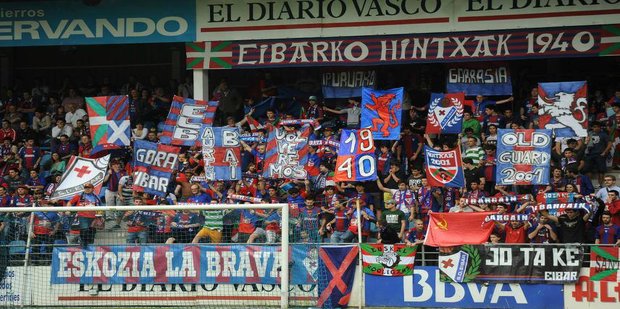

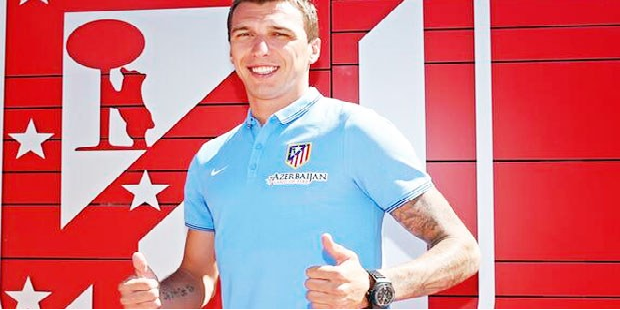


You must be logged in to post a comment Login